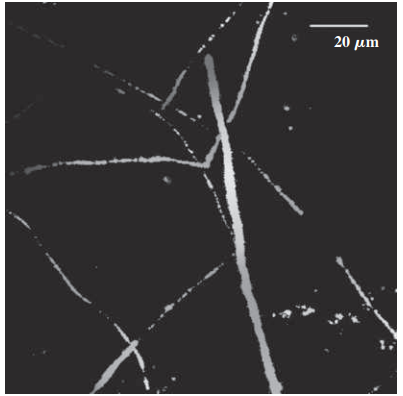Quantum dots, or qdots, are nanoscale crystals of semiconductor material that trap electrons in a potential well
Question:
Quantum dots, or qdots, are nanoscale crystals of semiconductor material that trap electrons in a potential well closely resembling the three-dimensional square well discussed in Section 35.4. Physicists, materials scientists, and semiconductor engineers have been studying qdots for their potential to miniaturize electronic components. More recently, qdots have been used in biology and medicine to ?tag? individual molecules, helping scientists follow cellular processes (Fig. 35.20). Qdots also facilitate high-resolution imaging within the cell, and they show promise for medical diagnostics and targeting tumors for the delivery of anticancer agents. In the biomedical context, qdots work as replacements for traditional fluorescent dyes. Illuminating qdots promotes their electrons to higher energy levels; as they drop back, they emit photons of precise wavelength. A dot?s size and structure determine this wavelength.
?
If the dot behaves as a perfectly cubical 3-D square well, the ground state isa. nondegenerate.b. twofold degenerate.c. threefold degenerate.d. You can?t tell without knowing the energy.
Step by Step Answer:






